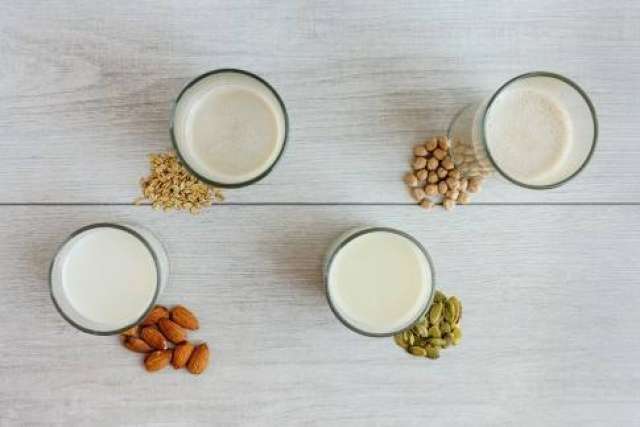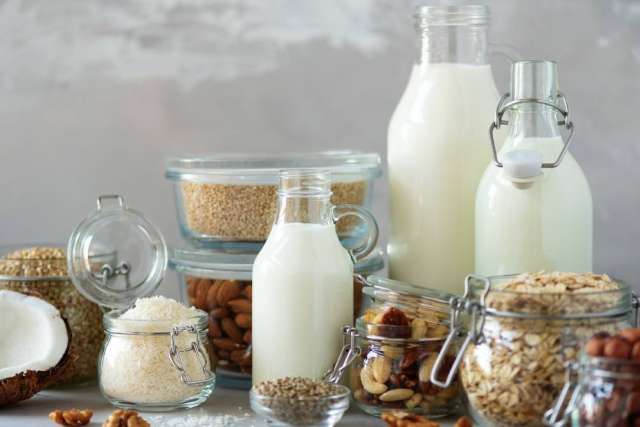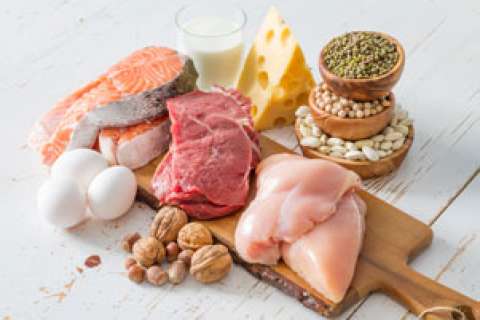These days, shopping for a gallon of milk involves making some choices – cow’s milk now shares the shelf with many non-dairy milk alternatives. Plant-based milk is rising in popularity along with people’s growing concerns about their health, the environment and animal welfare.
“There’s really no downside to drinking plant-based milk instead of cow’s milk,” says Dana Ellis Hunnes, PhD, MPH, UCLA Health senior dietitian. “Although milk is only one small part of a person’s diet, plant-based milk along with a plant-forward diet offers many benefits for your health and the environment.”
While you’ll get the most from a fully plant-forward diet, simply swapping your milk choice can provide benefits to your health and the world around you. If you’re on the fence about trying plant-based milk or need a refresher on the advantages of milk alternatives, here’s what you need to know:
There are many flavors and types of plant-based milk alternatives
With so many kinds of plant-based milks available, chances are you’ll find one that works for you. Alternative milks can be categorized according to their plant base:
- Fruit, like banana milk
- Grain, like rice, quinoa and oat milks
- Legume, such as pea protein and soy milk
- Nut, which includes walnut, cashew, almond and coconut milks
- Seed, like hemp, sesame and flaxseed milks
Within each type of plant-based milk, you’ll often find options in flavor (chocolate or vanilla) and sweetness (unsweetened or sweetened).
Plant-based milk offers a healthy alternative to dairy milk
Some people turn to non-dairy milk because of an allergy or intolerance. But even if cow’s milk doesn’t cause any issues for you, consider the health benefits of plant-based milk, including:
No hormones
Cows produce milk during pregnancy and lactation when an increase in the hormone estrogen naturally occurs. Cows on factory farms, where 70% of dairy cows are raised, have serial pregnancies that result in extremely high hormone levels, Dr. Hunnes explains. That naturally occurring estrogen makes its way into the dairy milk you drink.
“The effect of this added estrogen on human health is still controversial, and there is a lot of conflicting data,” Dr. Hunnes says. “But some studies show that it can increase the risk of breast, uterine and prostate cancers.”
Lower in fat and calories
Some nutritional aspects of many plant-based milks are similar to cow’s milk, such as sodium and potassium. But according to the American Society of Nutrition, most milk alternatives are a healthier choice when it comes to fat and calories.
Compared to one cup of whole-fat cow’s milk, most plant-based milks have 37% to 75% less fat. Many varieties of non-dairy milk, including almond, rice, coconut, hemp and cashew milk, are lower in calories than dairy milk.
Less sugar
The unsweetened varieties of plant-based milk offer an opportunity to consume less sugar than dairy milk. “Most people don’t realize that cows’ milk has 12 grams of carbohydrates in it from milk sugars (lactose),” Dr. Hunnes says. “Many of the unsweetened varieties of plant-based milk have just one gram of carbohydrates. The less sugar we can add to our diet, the better.”
Non-dairy milks are environmentally friendly
There is growing evidence that what you eat affects climate change. But plant-based diets, including milk alternatives, can play a big role in protecting our environment.
According to Dr. Hunnes, plant-based milks:
Require less land
Dairy cows need to graze. But the space those cows need and the foods they eat often lead to deforestation, which affects climate change. Compared to the land that cows need for grazing or for food, plants grown to produce milk alternatives require very little land.
“Producing a gallon of plant-based milks, on average, requires 10% of the land that it takes to produce the same gallon of cow’s milk,” Dr. Hunnes says. “Plant-based milk offers a huge reduction in land use.”

Require less water
Producing plant-based milk conserves water when compared to the water required to produce cow’s milk on dairy farms. While different plants require different levels of water, the amount of water used to produce plant-based milk averages 50% less (and up to 90% less) water than that of dairy milk.
Produce fewer emissions
According to the Food and Agriculture Organization of the United Nations (FAO), cattle milk is responsible for 20% of the world’s overall greenhouse gas emissions. The plants needed to produce milk alternatives produce much less carbon dioxide. “The cows needed to produce dairy milk emit up to three times the amount of carbon dioxide as plants,” Dr. Hunnes says. Switching to plant-based milk immediately reduces your carbon footprint.
Tips for choosing a plant-based milk
Dr. Hunnes offers the following tips for selecting a plant-based milk:
- Choose the type that tastes the best to you: Try different types, brands and flavors. Find one you like and stick with it, so you’re more likely to drink it.
- Read the nutrition label carefully: All plant-based milks are not created equal. Make sure the one you drink provides the nutrients you’re looking for, such as calcium or vitamin D. Whenever possible, get your nutrients from food, not supplements.
- Consider a higher protein option if you are vegan: Many plant-based milks do not offer much protein. If you aren’t getting protein elsewhere, choose a plant-based milk that supplies it. The best plant-based protein options are pea, flaxseed and soy milks.
- Keep an eye on the cost: Some plant-based milks can cost twice as much as dairy milk. If you drink a lot of milk, look for the best unsweetened option in your price range that has the nutrients you require.
Reach out to your primary care physician or dietitian to better understand your dietary needs or for help with transitioning to a plant-based diet.



